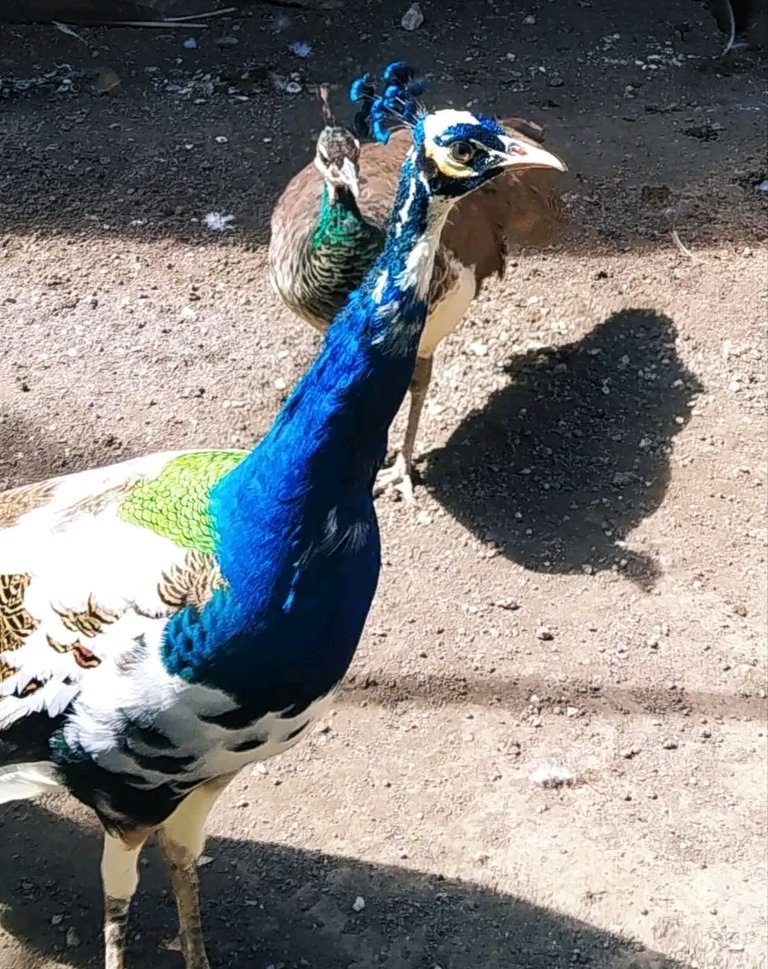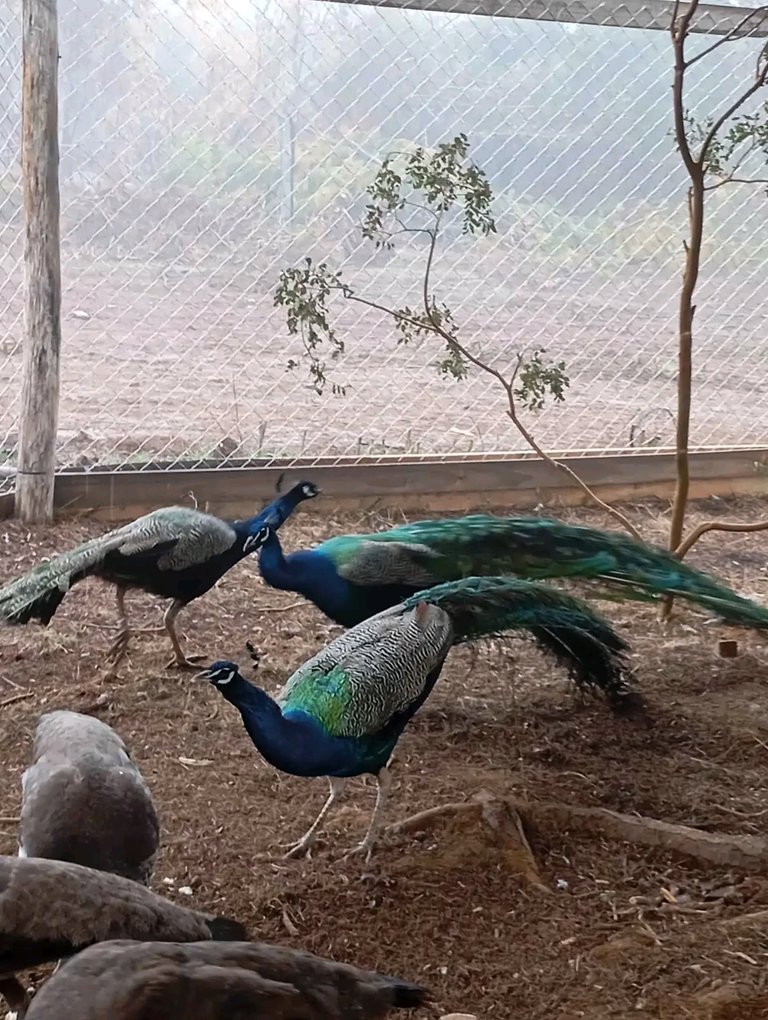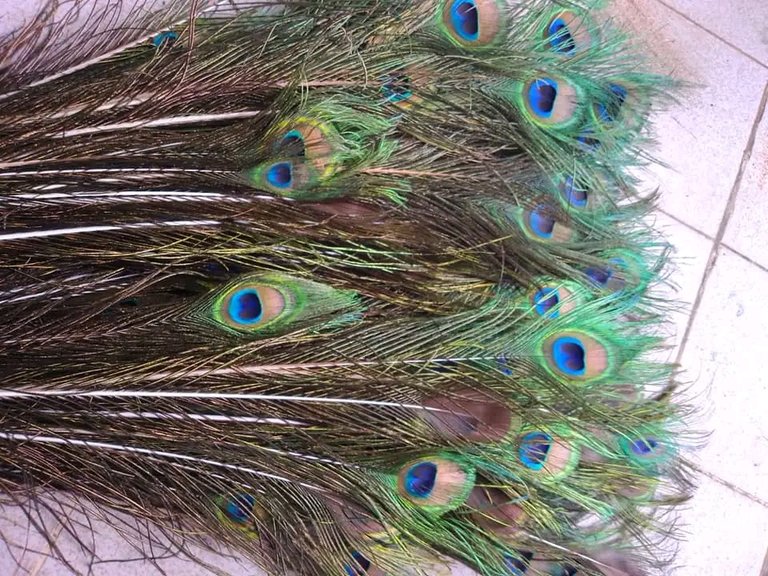
Quiero compartirles parte de mi investigación científica sobre un ave india introducida en Cuba.
I want to share part of my scientific research on an Indian bird introduced in Cuba.
▎Resumen:
▎Abstract:
El pavo real común (Pavo cristatus), originario del subcontinente indio, ha sido introducido en diversas partes del mundo, incluyendo Cuba. Este estudio examina las características morfológicas, el comportamiento y la ecología del pavo real en el contexto cubano, así como su impacto cultural y ecológico en el país. Se discuten las implicaciones de su introducción y su rol en la biodiversidad local.
The Indian peafowl (Pavo cristatus), native to the Indian subcontinent, has been introduced to various parts of the world, including Cuba. This study examines the morphological characteristics, behavior, and ecology of the peafowl in the Cuban context, as well as its cultural and ecological impact in the country. The implications of its introduction and its role in local biodiversity are discussed.

El pavo real común (Pavo cristatus) es una especie de ave perteneciente a la familia Phasianidae, conocida por su plumaje iridiscente y comportamientos de cortejo elaborados. Su introducción en Cuba se ha documentado desde el siglo XIX, donde ha encontrado un hábitat propicio en áreas rurales y parques urbanos (González et al., 2015). Este estudio tiene como objetivo evaluar la situación actual del pavo real en Cuba, analizando su adaptación al entorno local y su interacción con la fauna nativa.
The Indian peafowl (Pavo cristatus) is a bird species belonging to the family Phasianidae, known for its iridescent plumage and elaborate courtship behaviors. Its introduction to Cuba has been documented since the 19th century, where it has found a suitable habitat in rural areas and urban parks (González et al., 2015). This study aims to assess the current situation of the peafowl in Cuba by analyzing its adaptation to the local environment and its interaction with native fauna.

Se realizaron observaciones directas en diferentes localidades de Cuba, incluyendo La Habana, Viñales y Trinidad, entre 2020 y 2023. Se registraron datos sobre el comportamiento de cortejo, la dieta y la interacción con otras especies. Además, se revisaron fuentes bibliográficas para contextualizar la historia de la especie en el país.
Direct observations were conducted in different locations in Cuba, including Havana, Viñales, and Trinidad, between 2020 and 2023. Data on courtship behavior, diet, and interaction with other species were recorded. Additionally, bibliographic sources were reviewed to contextualize the history of the species in the country.

▎Resultados:
▎Results:
Características Morfológicas:
Los machos presentan un plumaje vibrante con un tamaño promedio de 2.3 metros (incluyendo la cola), mientras que las hembras son más pequeñas, con un plumaje marrón que facilita el camuflajeMorphological Characteristics:
Males exhibit vibrant plumage with an average size of 2.3 meters (including the tail), while females are smaller with brown plumage that aids in camouflageHábitat y Distribución:
El pavo real se ha adaptado a diversos hábitats en Cuba, desde áreas rurales hasta jardines botánicos. Se observó que prefieren zonas abiertas cercanas a cuerpos de aguaHabitat and Distribution:
The peafowl has adapted to various habitats in Cuba, from rural areas to botanical gardens. It was observed that they prefer open areas near bodies of waterComportamiento y Alimentación:
La dieta del pavo real en Cuba incluye granos, semillas y pequeños invertebrados. Se registraron comportamientos de cortejo durante la primavera, donde los machos exhiben su plumaje para atraer a las hembrasBehavior and Feeding:
The diet of the peafowl in Cuba includes grains, seeds, and small invertebrates. Courtship behaviors were recorded during spring when males display their plumage to attract females.Impacto Cultural:
En Cuba, el pavo real es considerado un símbolo de belleza y se utiliza frecuentemente en festividades y eventos culturales. Su presencia ha influido en la percepción de la fauna exótica en el país.Cultural Impact:
In Cuba, the peafowl is considered a symbol of beauty and is frequently used in festivals and cultural events. Its presence has influenced the perception of exotic fauna in the country.

La introducción del pavo real en Cuba ha generado tanto interés como preocupación. Si bien su belleza contribuye al patrimonio cultural, también plantea preguntas sobre su impacto en las especies nativas y los ecosistemas locales. Se recomienda un monitoreo continuo para evaluar su influencia ecológica.
The introduction of the peafowl in Cuba has generated both interest and concern. While its beauty contributes to cultural heritage, it also raises questions about its impact on native species and local ecosystems. Continuous monitoring is recommended to assess its ecological influence.


El pavo real común ha encontrado un nicho en Cuba que le permite prosperar. Sin embargo, es esencial considerar su manejo adecuado para evitar posibles desequilibrios ecológicos. Este estudio resalta la necesidad de realizar investigaciones adicionales sobre las interacciones entre especies introducidas y nativas.
The Indian peafowl has found a niche in Cuba that allows it to thrive. However, it is essential to consider its proper management to avoid potential ecological imbalances. This study highlights the need for further research on the interactions between introduced and native species.
▎Referencias:
▎References:
• González, A., Fernández, M., Rodríguez, J. (2015). Introducción del Pavo Real en Cuba: Historia y Ecología. Revista Cubana de Zoología.
• González, A., Fernández, M., Rodríguez, J. (2015). Introduction of the Peafowl in Cuba: History and Ecology. Cuban Journal of Zoology.
• López, R., Pérez, L., Martínez, J. (2022). Hábitats Preferidos por el Pavo Real Común en Cuba. Ecología Tropical.
• López, R., Pérez, L., Martínez, J. (2022). Preferred Habitats of the Indian Peafowl in Cuba. Tropical Ecology.
• Martínez, C., Pérez, D. (2021). Dimorfismo Sexual en el Pavo Real Común: Implicaciones Ecológicas. Avances en Biología.
• Martínez, C., Pérez, D. (2021). Sexual Dimorphism in the Indian Peafowl: Ecological Implications. Advances in Biology.
• Ríos, S., Gómez, T., López, F. (2023). Comportamiento de Cortejo del Pavo Real Común en Ambientes Urbanos Cubanos. Revista de Etología.
• Ríos, S., Gómez, T., López, F. (2023). Courtship Behavior of the Indian Peafowl in Cuban Urban Environments. Journal of Ethology.
• Sánchez, M., Martínez, R. (2020). El Pavo Real en la Cultura Cubana: Simbolismo y Representación. Anales de Antropología Cultural.
• Sánchez, M., Martínez, R. (2020). The Peafowl in Cuban Culture: Symbolism and Representation. Annals of Cultural Anthropology.


